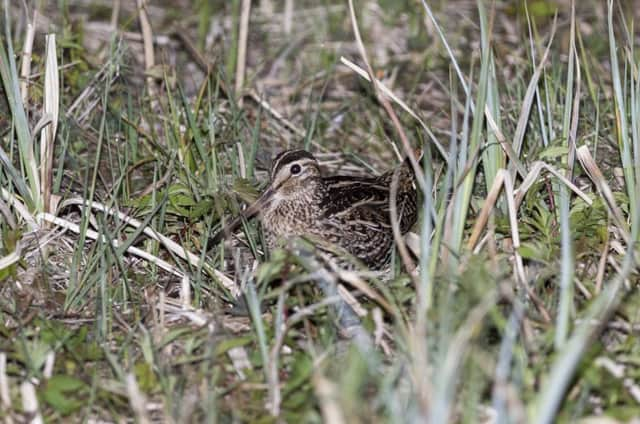Sponsorship helps to track elusive Woodcocks


Pinks, Garth, Remy and Malt are just four of the imaginative names given to woodcock (Scolopax rusticola) that have been “adopted” by supporters of the Game & Wildlife Conservation Trust’s (GWCT) Woodcock Watch Appeal.
The appeal has really captured the imagination of all ages of people who are fascinated by this elusive species and intrigued by our innovative research.
Advertisement
Hide AdAdvertisement
Hide AdBird migration has fascinated sportsmen and naturalists alike for centuries. Yet little is known about the specifics of woodcock migration – the routes taken, timings of journeys and the prompts that trigger departure. Many have speculated about the origins of the woodcock they see in winter and looked for possible clues in the colouration of the plumage.
Our analysis of isotopes in feathers has provided information on the origin of migrants at a broad geographical scale, but we are still learning about the routes taken by individual birds back to the main breeding grounds in Russia, Belarus and Scandinavia or the time taken to reach them.
Recent development of new techniques and continued miniaturisation of tracking devices has made rapid advances in the study of migration by birds such as woodcock possible. This is opening up exciting possibilities for new discoveries. By increasing our knowledge of migration strategy and timing, we can start to evaluate the importance of stop-over sites, study the impact of habitat change and consider the potential effects of different shooting pressures. Satellite tracking is a well-established technique for following larger species, such as swans and geese, but satellite tags are now small enough to follow birds like woodcock. GWCT has satellite tagged 51 woodcock in recent years.
The birds tracked with satellite tags have been migrants visiting Britain and Ireland for the winter. However, in the UK we have an estimated widespread breeding population of about 55,000 birds native to the UK which swells with an influx of migratory birds each autumn. Until 2003, crude estimates suggested there was, at most, 12,500 pairs in the UK but a dedicated monitoring programme by GWCT and the British Trust for Ornithology revealed an estimated 78,350 males in 2003 – over six times the previous estimate. This number, however, has declined by 30 per cent over the last decade and GWCT needs to understand why.
We are currently analysing data on landscape composition around breeding survey sites and information on habitat structure to further understand the factors influencing breeding woodcock distribution. To manage and conserve such a widely distributed, long-distance migrant, we also require a clearer understanding of all aspects of the woodcock’s ecology at a European scale.
To assist practically with this effort, GWCT is inviting people to help with woodcock research in three ways: roding male (mating displays) woodcock counts, bag data and supplying our scientists with cadavers retrieved during the shooting season. And to encourage engagement with our native species and foster this growing interest in one of our most enigmatic birds, GWCT is offering a free woodcock sponsorship to any school so that their pupils can share in this fascinating experience, tracking a woodcock as it migrates across Europe and back again, sometimes even to the very same field. The free school woodcock pack includes a certificate of sponsorship, factsheets and regular e-mail updates about the progress of the school’s chosen woodcock.
As for our four intrepid woodcock, the springtime weather across Europe has enabled us to receive a steady stream of location data from our tagged birds.
In the skies above eastern Europe, Garth is making an extraordinary journey. Satellite data from 20 May showed she was still out on her own, heading for the Russian border with Kazakhstan – a distance of 5,988km. Remy who was tagged in the Scottish Highlands in March 2013, is currently in Belgium. Pinks from Bath and Malt from Wales are both in Russia, with Pinks having taken a less direct route and clocked up 1,600 more kilometres than Malt.
To find out more about this fascinating project, visit www.woodcockwatch.com/
• Katrina Candy is head of PR and education at the Game & Wildlife Conservation Trust www.gwct.org.uk